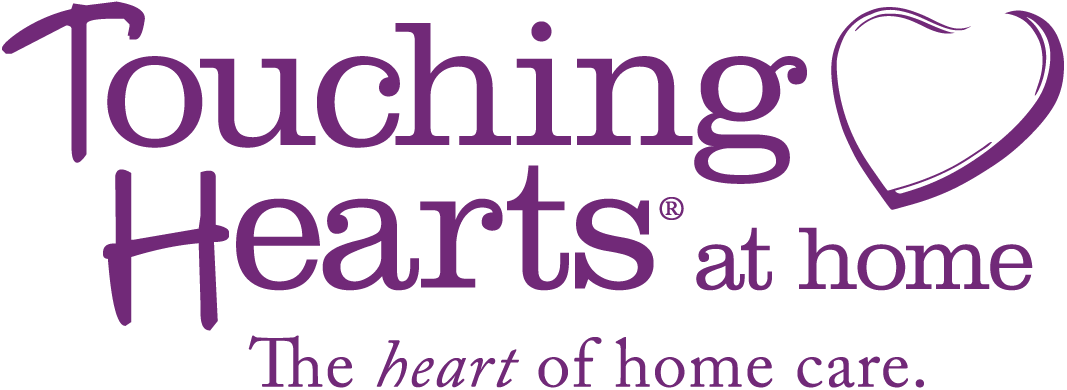At CareAcademy, our team members are passionate about making a difference in the lives of caregivers and […]
Home care continues to face caregiver shortages, and demand for home care providers is on the rise. With an aging generation of baby boomers, the home care industry’s historic low wages, and the burnout that often comes with providing care, agency owners often struggle to find and retain quality staff.
We spoke with several home care executives about the future of home care, the industry trends they’re noticing, and what they believe agencies need to prepare for to remain competitive. We’ve included their responses at the end of this blog. But first, let’s look at 13 trends in home care.
1. Home Care Franchising Will Grow
In an unpredictable economy, individuals may be considering new career trajectories that prioritize community, security, and personal satisfaction — which home care can provide, especially with 10,000 baby boomers turning 65 each year.
With lingering COVID-19-related operational challenges, those looking to open home care facilities will be looking for mentors, which a franchise model can offer. Going into an industry with a roadmap for success will feel safer and more appealing than building a model independently — and potentially even more so for those looking to make a career change in the wake of the pandemic.
Franchise growth won’t be solely attributable to new owners in the market; we expect to see independent-to-franchise conversions, as well.
2. Caregiver Wages and Benefits Will Increase
The average pay of home care workers is $13 per hour, which isn’t much considering the cost of living in the United States. But in 2023, at least 23 states increased minimum wages, and some states were considering wage increases specifically for caregivers.
In Minnesota, the minimum home care wage will increase to $19 an hour in 2024, with experienced workers eligible for up to $22.50 per hour. Absent a federal minimum wage increase, it’s possible more states will be eyeing wage increases for home caregivers.
Benefits such as transferable college credits, regular bonuses, and childcare assistance could also become more prominent, as agencies compete for top talent and qualified caregivers. Flexible PTO, family health coverage, and team events are also benefits that may help reverse caregiver shortages.
3. Tech Will Ease Rising Caregiver Demands
While no one appears to believe technology will replace human caregivers, technology such as apps, digital tools, and artificial intelligence is expected to significantly ease the demands on caregivers. Mark H. Friedman of Senior Helpers Boston and South Shore says that technology could help caregivers in several capacities, such as remote monitoring, capturing vitals, medication reminders, and abnormality alerts.
With technology possibly lessening the workload of caregivers, care agencies may be able to take on additional clients, even as they search for more caregivers to join the team.
4. Agencies Will Promote Training for Caregivers
Trends in the home care industry and numerous studies and personal accounts have shown that better training and support improve caregiver retention rates. Offering quality caregiver training and opportunities for upskilling can help agencies attract and retain top talent.
Expect to see more agencies offering free, on-demand video training for new caregivers, as well as training programs for specific career paths.
5. Agencies May Offer Companionship Services
According to the CDC, more than one-third of adults age 45 and older struggle with loneliness, making companionship services a high priority for care agencies. Early home health care trends show that agencies are expected to ramp up companionship services and that clients and families will seek agencies that include this in their care.
Some are skeptical of companionship as a business idea. However, the startup Papa — which offers services in all 50 states — is proving these skeptics wrong. Papa pairs seniors with a person who will call, video chat, and visit in person, offering life-changing support to lonely seniors.
6.Remote Patient Monitoring (RPM) Will Grow
While telehealth provides a way to check in on people, it doesn’t allow healthcare providers to collect vital signs. RPM is the solution to that problem.
RPM allows for real-time data, letting direct care workers make necessary adjustments to treatment when controlling symptoms and disease progression. It became a popular alternative to in-person medical visits during the height of the COVID-19 pandemic. Expect to see RPM continue, especially for people with limited mobility who may have difficulty traveling for checkups.
7. Venture Capitalists Will Change the Market
Venture capitalists likely aren’t what you imagine when you think of trends in home care trends. However, venture capitalists seek growth opportunities, the home care industry is experiencing substantial growth, and the market is overdue for disruption.
Most home care agencies are operated by independent owners who are too busy with day-to-day tasks to even consider expansion. Venture capitalists offer the financial backing to help home care agencies scale, and VC investors will also likely be supporting services such as companionship, personalized in-home care, group care homes, and more.
8. Caregiver Recruitment & Retention Programs
A significant home health care trend in 2024 will be prioritizing caregiver recruitment and onboarding. Turnover in the industry is high, and recognizing that caregivers are the link between clients and businesses is imperative for success in the home healthcare industry.
Trends in the home care industry will begin to shift, focusing more on hiring the right people for the position rather than simply filling a role with a body. Organizations that deliberate about who they’re hiring and prioritize onboarding will benefit from greater retention and employee satisfaction.
Some agencies have found success with referral programs that reward their employees for referring applicants who become new hires.
9. Agencies Will Focus on Person-Centered Care
Home care is a competitive industry, and agencies that put clients at the center of their care are poised for continued success. The Centers for Medicare & Medicaid Services (CMS) already requires home health agencies that accept Medicaid to enable person-centered care; those guidelines will likely become standard operating procedures for all agencies in the years ahead.
Expect to see more agencies involving clients and their families in plans of care, asking for frequent feedback, and improving communication between caregivers and clients. Collaboration and communication between care providers — physicians, home health aides, and occupational therapists, for example — will also be a common theme in improving personalized care.
10. Job Growth Will Continue
The overall long-term care sector is projected to have 20 million job openings by 2040. Of those openings, 1 million will be for home health and personal care aides.
11. Agencies Will Offer New Specialties
Some industry experts predict that agencies will add new specialities to their home care services — for example, dementia care, management of specific diseases, and end-of-life care. New specialities may require additional training, but diversifying services could help care providers remain competitive.
12. Data Will Become More Important
Home care agency administrators will increasingly be looking for data that helps them evaluate their business and plan for the future. Metrics like staff turnover, job satisfaction, and training completion rates can help administrators know when to retool their employee-facing processes. And franchise operators can review data to ensure all locations are following corporate standards.
13. Diversity Will Play a Larger Role in Hiring
the diversity of the US population is growing, and according to recent Census statistics, about 68 million people speak a language other than English while at home. Spanish, Chinese, Tagalog, Vietnamese, and Arabic are the top non-English languages in US homes. For home care agencies, this trend indicates that there will be rising demand for bilingual or multilingual caregivers in the years ahead, and agencies may need to make non-English training available.he recruitment and retention of home care workers. Turnover in the industry is high, and recognizing that caregivers are the link between clients and businesses is imperative for success in the home healthcare industry.
Trends in the home care industry will begin to shift, focusing more on hiring the right people for the position rather than simply filling a role with a body. Organizations that deliberate about who they’re hiring and prioritize ongoing training will benefit from greater retention and employee satisfaction.
Identifying areas for improvement will help agencies remain competitive, increase employee and client satisfaction, and generate greater revenue.
Final Thoughts
Home health care trends will be a hot topic in 2024 as the senior population grows. Expect to see increased home care franchising, remote patient monitoring, technological innovation, and companionship services.
With staffing challenges, agencies will be forced to take a hard look at who they hire and how they hire and retain their employees. Keeping up with the trends in home health care will help your agency stay competitive, remain lucrative, and be successful.
Now it’s time to see what the home care executives we talked to said.
11 Execs Share Their Thoughts on Home Care Trends To Watch For in 2024

Tori Flax
I think that the most impactful trend for home care and home health agencies is the movement toward a higher minimum wage. I don't want to dive into whether or not this is something that should take place because that is now irrelevant.
How do you do this while keeping your doors open? How do you pay your employees more without also negatively impacting your customers? These are questions that must be answered in order to help those who need it.

Chris Christel
The pandemic has certainly taken its toll on the industry. Those agencies who survived have had to make adjustments to accommodate changing needs and expectations. There is a shift in the supply/demand ratio. What I have found for the first time since starting my business in the mid eighties is that there are more seniors needing home care than there are caregivers to help. This trend will have the biggest impact on how we answer the challenge going forward.

Karl Ralian
In order to attract and retain caregivers we need to increase hourly wages. Average wage in my area, according to Ziprecruiter, is $12.00/hour. We are significantly above that and we look to increase our average hourly rate to $15.00/hour by the middle of next year.

Dustin Distefano

Mark Friedman
Technology continues to evolve as it relates to care, and has assumed even greater importance as we address a caregiver shortage.
With capabilities such as remote monitoring, the ability to capture vitals, medication reminders, trend tracking, alerts to anomalies, and telehealth, we can keep our clients safer and healthier. Exciting new solutions such as remote care monitoring with a virtual care assistant further enhance hands on care.
With additional options to facilitate engagement, interactive programming, video chats with family and friends, online cognitive stimulation, and music and podcasts, we can alleviate isolation and loneliness and expand opportunities for seniors to interact with others and the world around them.
In the end, Home Care must embrace technology not only to support day to day operations but also to facilitate an improved client experience and to configure care appropriately between hands on support, safety net, engagement and health monitoring.

Marian McGunagle

Kathy Clinton

Tauseef Riaz

Chris Gerardi

Chelsea Pettey
The competitive nature of the employment marketplace will continue to have an impact on home care and home health agencies' ability to meet demand.

Steve Kohn
From our perspective as a homecare agency having been in this business for over 17 years, we believe that home care and home health agencies will continue to be forced to cater to the demands of an evolving labor force, primarily the ones who are available and willing to continue to work in the home care market.
This issue will be front and center as companies try to balance what they have to pay their caregivers versus what they will need to charge in order to maintain profitability. In our major metropolitan area (DC/MD/VA) most caregivers are from foreign countries. Many are the sole wage earners and wire funds back to their families in their home countries on a regular basis. Inflationary pressure will continue to have a negative residual effect on the value of the US dollar, pushing hourly wages upward while the demand for employees continues to slam head-on into the short supply of available workers. Caregivers who are still willing to work home health care jobs will continue to be able to demand higher wages as they see their value as workers increase in the real world market.
At the same time workers' wages are being driven upward by market influences and inflation, caregivers continue to exit jobs from institutions such as hospitals, nursing homes, assisted living facilities and group homes in numbers never before seen prior to COVID-19. Many are seeking private duty cases which further contributes to inflated hourly wages and in turn higher rates that need to be charged by companies in order to stay profitable in business.
Unfortunately, the net result will be home care and home health costs that will become increasingly unaffordable for the majority of elderly clients who need help the most. These wage and rate increases will place further stress on households caring for loved ones, families and the healthcare system in general well into the end of this decade.






